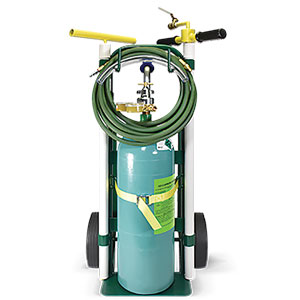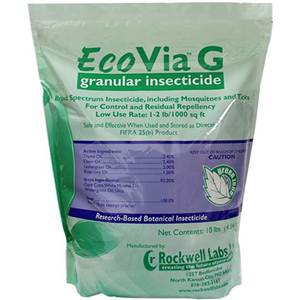
Image: Hey Darlin/DigitalVision Vectors/Getty Images
A recent study from the University of Georgia (UGA) analyzed the pest management’s contribution to Georgia’s economy to clarify the industry’s value.
The research also highlights areas where entomologists and economists can better collaborate to gather and analyze critical information and offers a model for doing just that. The study was published in February in the Journal of Economic Entomology.
The professional pest management industry (PPMI) dates back over a century in the U.S. People need pest control services for various reasons like health, dealing with invasive species, managing nuisances, responding to weather changes, real estate trends and the growth of the food or retail industry. U.S. Census and Bureau of Labor Statistics data indicate that both revenue and employment for the pest management industry in Georgia increased 117 percent from 1997 to 2021. That level of employment is significant, with projections suggesting it may soon surpass other nearby states, like Texas.
“PPMI is a major economic force in many state economies,” said Dr. Brian Forschler, a professor in the Department of Entomology at the UGA. Jacob Winkles, who did the study for his master’s degree in agribusiness at the UGA, wasn’t in the entomology department but worked in Dr. Forschler’s lab during the last few years of his undergraduate degree program and throughout grad school. “
“Georgia’s economy is split between business and agriculture, and PPMI is one of those industries that runs across both and is important to both,” Dr. Forschler explains. “Without the relationship PPMI has with the Georgia Department of Ag[riculture], there would not be any oversight or consumer protection. And, without PPMI, even agricultural communities would have issues with pests.”
But Dr. Forschler told Entomology Today that entomology and economics have historically been siloed disciplines, which has helped lead to the wider public underestimating the economic role of the PPMI. In a state like Georgia, where the PPMI contributes significantly to the economy, Dr. Forschler sees this as a problem. He said Winkles’ project was exciting because it was an opportunity to bridge disciplines, which can benefit the PPMI and entomology more broadly.
Today, many state departments of agriculture are the lead agencies that closely monitor the PPMI, which has implications for reporting contributions to agriculture. But they didn’t always. Dr. Forschler notes that, in the 1950s, the PPMI sought regulation to distinguish reputable practitioners from fraudulent ones. While Dr. Forschler highlights the importance of collaboration between practitioners, manufacturers, regulators, and researchers, relationships with regulators vary across states, sometimes becoming adversarial. In Georgia, Dr. Forschler said the relationship has evolved towards cooperation—the state department of agriculture and the PPMI work together for compliance assistance with less emphasis on fines for enforcement. And this relationship, he said, is crucial because the industry’s professionals handle potentially harmful substances in and around people’s homes.
However, the industry faces various challenges in demonstrating its influence compared to other commodity groups with links to university entomology departments. For one thing, despite employing thousands of individuals and generating substantial revenue, the PPMI lacks the deep organizational structure and unified voice seen in some other sectors, making it difficult to advocate for its interests. Dr. Forschler notes the need for greater unity within PPMI to more effectively advocate for legislative actions and funding support.
The motivation for Winkles’ study included filling a research gap by providing, for the first time, a reproducible methodology for economic assessment of the PPMI in a single state, Georgia, with applicability for future surveys in Georgia or other states or at the national level. Winkles set out to clearly define the terms “revenue,” “contributions,” and “impact” in regard to 81 PPMI economic estimates; provide a template for locating economic data from public record sources at the state and federal level; and compare and contrast economic estimates based on two different data sets for the calendar year 2021.
He used two main methods for accomplishing these goals. First, he conducted surveys among industry professionals and requested data from the Georgia Department of Agriculture. This data collection included information on revenue, salaries, and other economic factors. He then used an economic modeling program to process the data and estimate the industry’s contribution to the state’s economy. Second, Winkles turned to publicly accessible federal economic data, such as Census Bureau data and economic surveys, for supplementary information for economic analysis.
The model determined that the total revenue for the professional pest management industry in Georgia in 2021 was between $833 million and $988 million. The research also showed the industry’s overall contribution to Georgia’s economy was $1.7 billion, supporting 13,000 jobs.
Winkles’ report also explains steps and provides a model for making clear, checkable and comparable economic evaluations at the state or national level. It also mentions that PPMI business licensure, training and safety and consumer advocacy is administered by state lead agencies, generally departments of agriculture.
However, data from state and federal databases are often organized by companies’ local branch offices rather than at the full company level, complicating analysis.
Variations in data-collection methods from state to state can also impact the comparability of economic evaluations between states or at the national level. For example, one study used survey data to estimate PPMI revenue in Florida. However, that survey likely underestimated the industry’s contribution due to what Dr. Forschler said was a low value for the service industry.
Despite this discrepancy, Dr.Forschler notes that comparing survey data to federal data reveals only slight differences in revenue estimates, so it’s still an essential practice.
Dr. Forschler said Winkles’ results using those two databases were extraordinarily close with the survey data, and (predictably) slightly lower than the federal database estimate, which he says illustrates the strength of Winkles’ approach.
More generally, funding presents a significant challenge for universities’ urban entomology and applied research programs. Dr. Forschler notes that while the PPMI has a growing interest in more applied research, funding opportunities from sources like the National Science Foundation have been limited. However, there has been a slight increase in funding opportunities from the United States Department of Agriculture more recently. He said building relationships with state departments of agriculture to access state line-item budgets and funding from interested clientele groups can help. For example, state regulatory agencies charge PPMI companies fees for certain services, which could then be designated to universities for research.
While data are objective, he told Entomology Today, the reception of research findings can vary depending on individuals’ personalities and interests.
“Our interest was to provide our colleagues with a pathway to generate comparable data,” Dr. Forschler said. “My own goal with this work within the state of Georgia was to bring greater recognition of partnership opportunities with the PPMI to both the Georgia Department of Agriculture and College of Agricultural and Environmental Sciences.”
The post UGA study estimates urban industry impact first appeared on Pest Management Professional.
from Pest Management Professional https://www.mypmp.net/2024/04/22/uga-study-estimates-urban-industry-impact/
Sacramento CA





























 4. Is it true the IGI CO2 system is labeled for more than just rats?
4. Is it true the IGI CO2 system is labeled for more than just rats?


